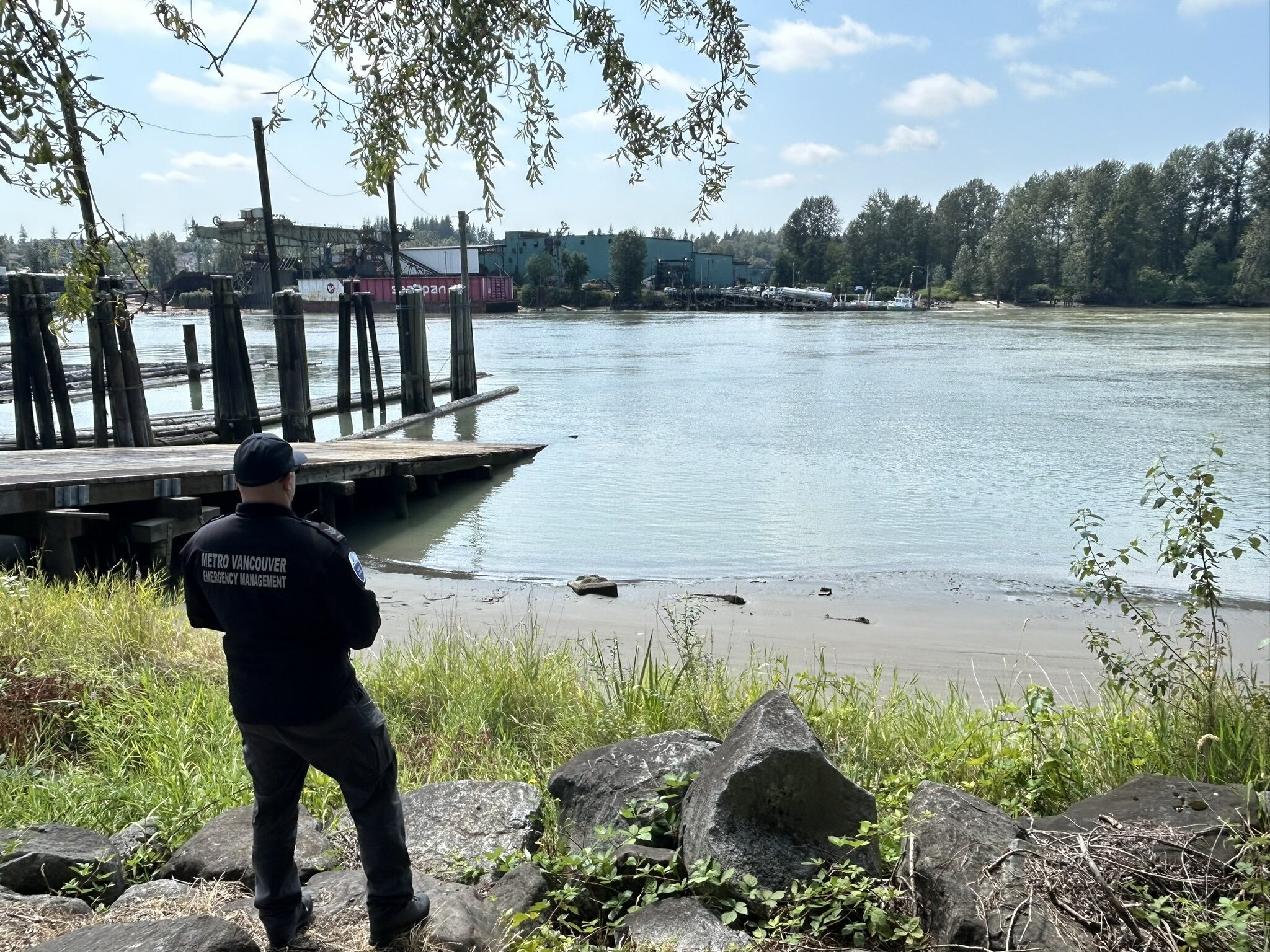
After a surge of water broke through a landslide dam along the Chilcotin River this week, logs and debris are now appearing in Metro Vancouver waterways.
As the debris passes through the region, officials are urging you to stay away from the Fraser River.
Acting Director of Metro Vancouver Emergency Management Brant Arnold-Smith tells 1130 NewsRadio that the amount of debris moving towards the ocean is significant but not a threat to the district’s critical infrastructure.
He says, as of Thursday afternoon, the “front end of this debris field” was approaching Delta and its tail was passing through Maple Ridge.
Arnold-Smith says the Fraser River Debris Trap near Agassiz worked as intended and captured “upwards of 50 per cent” of what was coming down the river.
“That was a success, but there’s still quite a bit of debris that made it through and is impacting the Lower Fraser River right now,” he said.
Arnold-Smith says crews surveying the river from land, by boat, and by air have seen debris that they’re certain is from the landslide.
“We saw large trees, trees that were fire damaged, trees that still had their root balls maintained … trees were the size of telephone poles or larger,” said Arnold-Smith.
He says some of it is accumulating on shorelines, including in some of the regional parks.
In posts to social media Thursday, the district urged people to keep clear of the river’s edge.
Arnold-Smith says a ‘high stream flow advisory’ for the Lower Fraser has been called off, but it’s still not safe to go on the Fraser River.
“Public safety is paramount and it’s important that any watercraft that are on the river, try to avoid it if you can. But there are circumstances where you need to work on the river. So marine operators are exercising vigilance around the debris field as it passes through the lower Fraser. And we just advise the public to stay out and away from the river if you can.”
He says most of the debris should pass through the Lower Mainland within the next 24 hours, but smaller bits may continue to flow through for a while.
“This incident really shows the power that nature has. And it’s a reminder that communities must always prepare for emergencies,” said Arnold-Smith.
The B.C. Ministry of Water, Land and Resource Stewardship announced Thursday that the surge of water progressed down the Chilcotin and Fraser rivers differently than it had predicted.
Peak wave heights reached Hope around 7:30 p.m. on Tuesday, reaching 1.1 metres high. The ministry had earlier models showing that the swells in Hope would not reach a full metre and hit hours later in the night.
In Mission, the peak waves reached no more than tidal fluctuation heights — 0.4 metres — around 9 a.m. Wednesday. Upstream at Big Bar, 3.5 metre wave-heights were seen as the water surged through early morning on Tuesday.